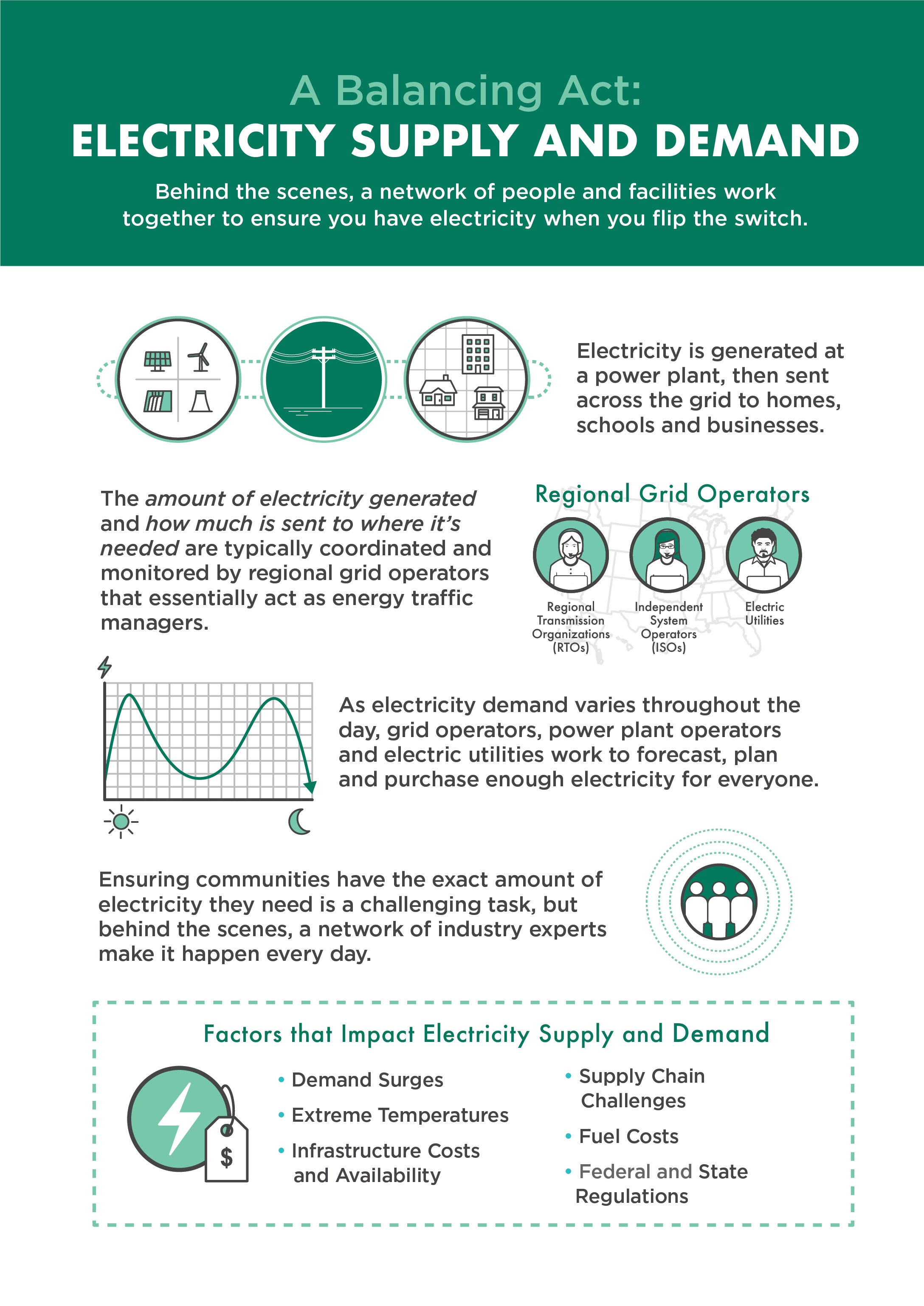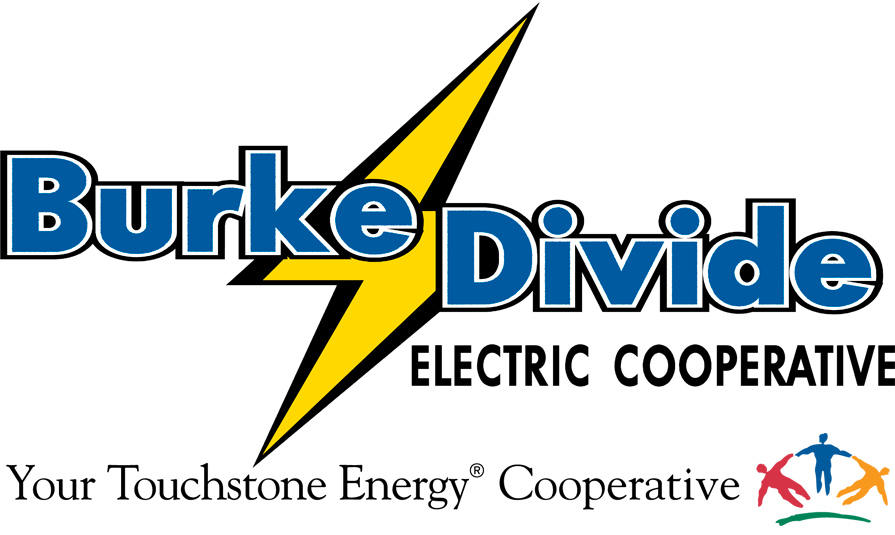 Balancing electricity supply and demand
Balancing electricity supply and demand
Electricity is essential for nearly every aspect of daily life. But we rarely think about how it’s produced and delivered to our homes. You might be surprised to learn a network of experts is working daily – and even by the minute – to anticipate how much electricity you need before you even use it.
We’re all connected to the electric grid, so ensuring the right amount of electricity for everyone involves a complex process of forecasting energy demand, planning for capacity and securing enough supply to meet America’s needs.
Powerful sources
First, electricity must be generated at a power plant using either traditional sources, such as coal, natural gas or nuclear energy, or from renewable sources, such as solar, wind or hydropower.
Burke-Divide Electric Cooperative (BDEC) works closely with our local wholesale power partners, Basin Electric Power Cooperative and Upper Missouri Power Cooperative, to secure enough electricity for our communities by using a diverse mix of energy sources to generate the power we deliver to your home or business. By maintaining a diverse energy mix of coal, natural gas, wind and hydropower, BDEC has options to ensure reliable power at a competitive cost.
On a larger scale, electricity supply and demand across the country are managed through a market that includes long-term planning agreements in which electricity is bought and sold just like other common goods and services. By working closely with our wholesale power partners, we are able to pool resources and expertise to deliver affordable power to our local communities.
Managing supply and demand
Across the country, other electric utilities are managing the same task of balancing supply and demand, which is why we have a larger network of key players in place to ensure enough power is delivered across the grid.
In most cases, the amount of electricity generated and sent to specific areas is coordinated and monitored by regional transmission organizations (RTOs) and independent system operators (ISOs). In other areas, individual electric utilities perform these tasks.
RTOs, ISOs and electric utilities act as air traffic controllers for the electric grid. They forecast when you, your neighbors and communities across a large region will need more power. These organizations take measured steps to ensure there’s enough supply to meet demand.
Looking ahead
Electricity use in the United States is expected to rise to record highs over the next two years, with the demand for electricity expected to at least double by 2050. At the same time, energy policies are pushing the early retirement of always available generation sources, which will undoubtedly compromise reliable electricity.
BDEC remains committed to providing affordable, reliable energy to the members we serve. To ensure this, we continue to work closely with our power suppliers to proactively address increased demand and other challenges that could compromise our local electric supply.
Until next time,
Jerry King
General Manager

